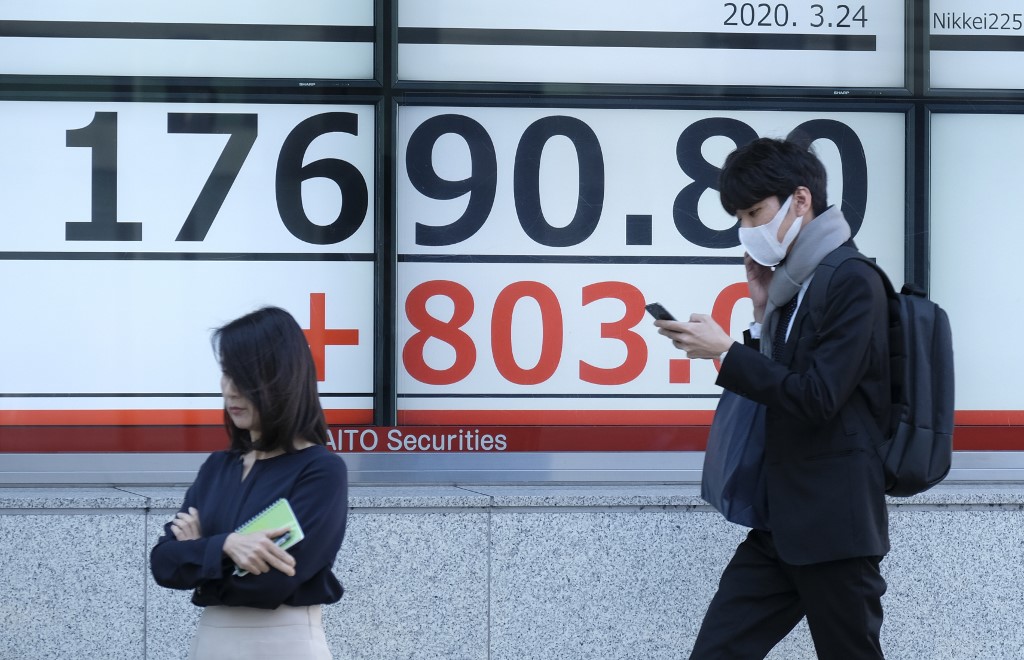Asian stock markets were lifted on Wednesday, boosted by a strong lead from Wall Street after Federal Reserve chief Jerome Powell moved to reassure investors that efforts to rein in inflation wouldn’t be allowed to threaten the economic recovery.
Global markets have endured a tough start to the year after minutes from the bank’s December meeting revealed a hawkish tilt by officials spooked by months of stubbornly high price rises that many fear could hit consumers and ruin the growth rebound.
They showed policymakers wanted to speed up their cycle of monetary tightening, including multiple interest rate hikes – some commentators saying four this year – and the shrinking of the bond holdings on its balance sheet, which help keep lending rates down.
Traders have been worried by the prospect of an end to the ultra-loose policies, which have helped power a two-year market rally and support the pandemic-hit economy.
Also on AF: US Chamber Calls For New Trade Deals, China Strategy
But Powell managed to soothe some of those fears on Tuesday during his Senate reconfirmation hearing.
He said the economy was on a strong footing, and with inflation rising and employment recovering, “the economy no longer needs or wants the very highly accommodative policy.”
Inflation was “very near the top of the list” of risks to the economic outlook, he said, adding that the current rate is “very far above target.”
Prices are currently rising at their fastest pace in four decades owing to a number of pressures including surging wage growth, supply chain snarls and high energy costs.
The Fed expects a “return to normal supply conditions” in the coming months, Powell said, but “if we see inflation persisting at high levels longer than expected… we will use our tools to get inflation back.”
The comments were taken by traders to be less hardline than feared, suggesting recent fears about a swift removal of easy-money measures may have been overdone.
Hang Seng Jump
Wall Street cheered, with Nasdaq climbing more than 1%, having taken a severe hit recently with tech firms more susceptible to higher borrowing rates.
The gains extended into Asia, with Hong Kong up 2.8%, thanks to a boost in tech firms, and Tokyo up a little shy of 2%.
The Hang Seng Index jumped 2.79%, or 663.11 points to 24,402.17. The Shanghai Composite Index climbed 0.84%, or 29.99 points, to 3,597.43, and the Shenzhen Composite Index on China’s second exchange added 1.42%, or 34.59 points, to 2,475.82.
The benchmark Nikkei index rose 1.92%, or 543.18 points, to 28,765.66, while the broader Topix index added 1.64%, or 32.54 points, to 2,019.36.
Seoul and Manila were also up more than 1%, while Shanghai, Sydney, Taipei, Mumbai and Bangkok were up. London, Paris and Frankfurt were all well up at the open.
Data showing Chinese factory gate and consumer inflation grew slower than expected – and left room for the central bank to cut interest rates – provided extra support.
Oil Sustains Rally
While most observers expect equities to endure some tough times in the near future, they remain broadly upbeat about the outlook for this year.
OANDA’s Edward Moya said he remained optimistic for three reasons.
“Household and corporate balance sheets remain very healthy, the upcoming earnings season should be strong, and the economy will still see above-trend growth even if the Fed raises rates three times and begins the balance sheet runoff in the summer.”
The upbeat vibe helped oil markets hold on to Tuesday’s more than 3% rally, which was fired by the Energy Information Administration lifting its 2022 price forecast by almost $5 from its December projection as worries ease about the Omicron coronavirus variant.
Key figures around 0820 GMT
Tokyo > Nikkei 225: UP 1.9% at 28,765.66 (close)
Hong Kong > Hang Seng Index: UP 2.8% at 24,402.17 (close)
Shanghai > Composite: UP 0.8% at 3,597.43 (close)
London > FTSE 100: UP 0.5% at 7,527.89
New York > DOW: UP 0.5& at 36,252.02 (close)
- AFP with additional editing by Sean O’Meara
Read more:
Bank of Japan Governor Expects Inflation to Accelerate
CNOOC Hikes 2022 Output Goal, Sees Oil Peak By 2030
























